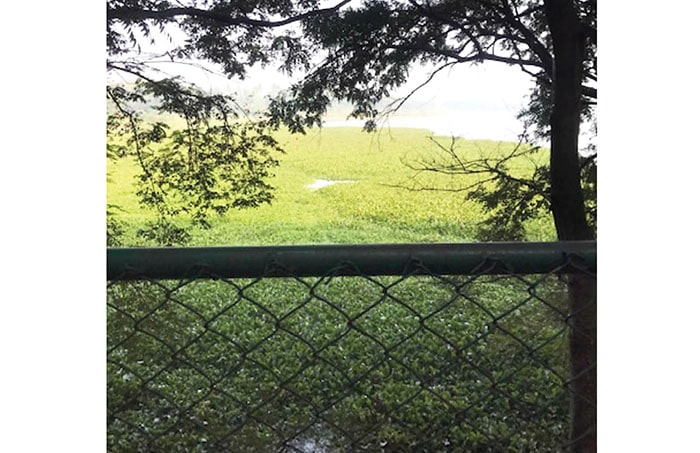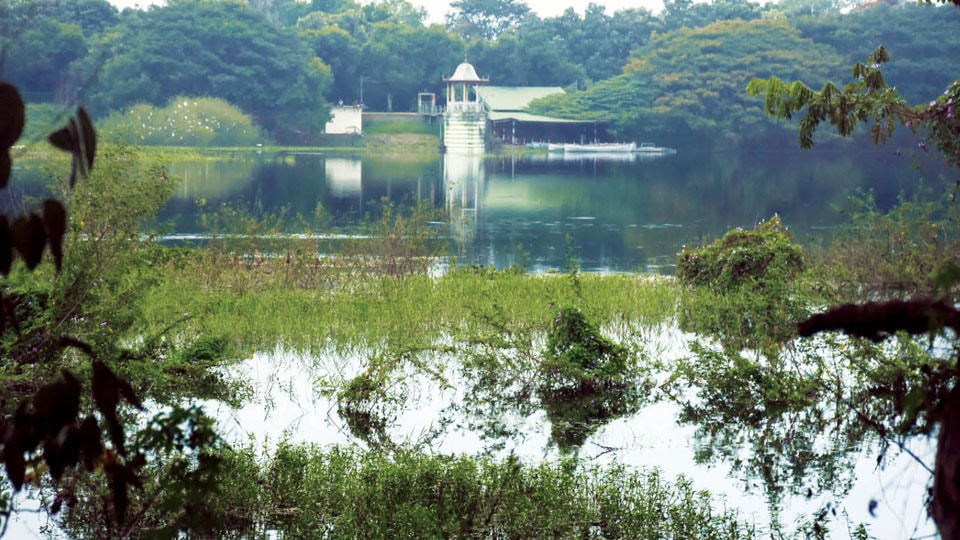Mysore/Mysuru: The growing popularity of Kukkarahalli Lake among morning and evening walkers and the increase in human-induced disturbance has affected the bird population of the Lake whose numbers have seen a steep decline over the years.
Moreover, the picturesque lake that provides the much-needed lung-space to the city is dominated by water hyacinth (Eichornia).
Conservationists say that the proliferation of water weeds in the Lake needs to be addressed successfully for its sustainable conservation. They recommend periodic cleaning of the Lake and stopping discharge of untreated sewage entirely.
Earlier, water hyacinths were on the margins of the Lake. Now they are growing and spreading towards the centre. “I am a regular walker on Kukkarahalli Lake walking track and this year the Lake has received more water thanks to copious rains. But now weeds have grown profoundly and they surely will occupy the entire water surface if not cleared,” Srikantappa, a retired IPS officer told Star of Mysore.
Water hyacinths have been growing at an alarming rate over the past few weeks. It is good to have water hyacinth as it absorbs phosphates, nitrates and other heavy metals in water. But not more than five percent of the water surface should have the weeds. If it grows at an alarming rate, it will die and rot inside the lake, raising a stink, said Rajkumar Devaraj Urs of Wildlife Conservation Foundation.
“These weeds float on water and ultimately choke the Lake. Water hyacinths are an indication that water is polluted as it grows rampantly on drainage water. Vast weed growth will obstruct sunlight and oxygen and will rob fishes of their food and in turn will die, directly affecting birds. If there are no fishes, there will be no birds,” he said.

After much hue and cry in the past, the Mysuru City Corporation and the District Administration had claimed that fresh water is being let out to the Lake. “This is not true and they are not doing so now. Gallons of wastewater, soap-mixed water flows into the Lake daily from surrounding areas like Paduvarahalli, Jayalakshmipuram and Valmiki Road and the authorities have done little to divert the waste and save the Lake,” he added.
The Lake is a perfect breeding ground for species such as cormorant, painted storks, pelicans, open billed storks, spoon bills and night herons and darters that used to breed in succession. But the breeding pattern has been disturbed and many of these birds have not been observed during the latest census, he said.
Water hyacinth is not a new phenomenon and in the past too, the Lake had been dominated
by weeds. “10 years back, we used to see and record the presence of nearly 5,000 birds roosting at Kukkarahalli Lake and now we are seeing around 3,000 birds. See the decline over the years and this is because we have left the Lake to die a slow death. And one day it will,” Rajkumar rued.








Recent Comments